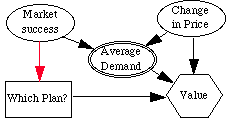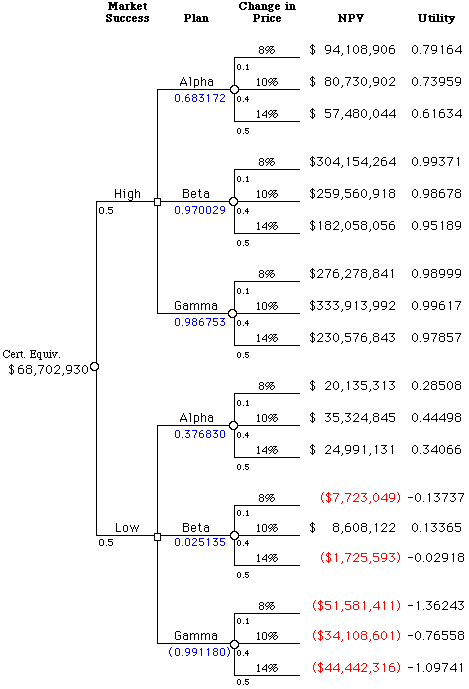Even though the perfect information does not exist (no one can predict the future), the Value of Perfect Information for an uncertainty places an upper bound on the amount of money the company should spend on gathering information about that uncertainty.
The sensitivity analysis revealed that we should investigate Market Success uncertainty in a greater detail. How much money should the company spend on this additional research? We can place an upper bound on this amount by calculating the Value of Perfect Information on the Market Success uncertainty.
Having perfect information means that we are making the decision after
learning whether Market Success is going to be high or low.

We can calculate the value of the deal with perfect information about
market success by finding the certain equivalent of the deal in which we
are making the decision after we know whether Market Success is high or
low. We still assume that there is a 50-50 chance that the market success
will be high or low. However, we suppose that we could choose the plan
after we know what the market success is.

When we know that the market success is high, we choose plan Gamma. On the other hand, if the market success is low, we choose plan Alpha.
The certain equivalent of the deal with the perfect information is $86,137,058. As you recall, the value of the initial deal (without this information) was $57,405,496.
The only difference between the two deals is the knowledge of market success before making the choice. This means that the difference between the two certain equivalents is the value added by this knowledge. Thus the Value of Perfect Information about market success is $ 28,731,562. Unfortunately, there is no way we can get that "perfect" information. However, this gives us an upper bound on the amount of money that the company should spend on any information. The next section discusses the value of "imperfect" information.
![]()
|
|
|